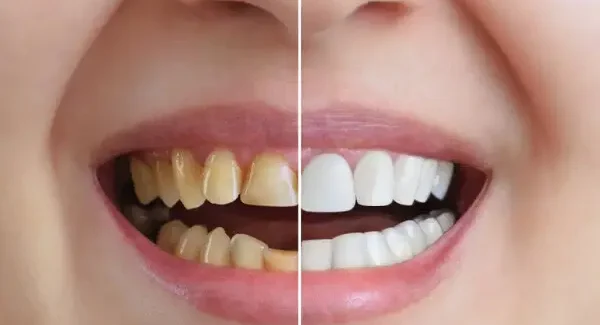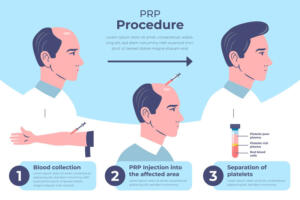
Everything You Need to Know About Dentures
At Marmaris Dental Center, we pride ourselves on providing top-quality dental services to our patients. One of the essential services we offer is the creation
If you have chipped, cracked, or discolored teeth and want to restore your smile confidence, this dental bonding treatment may be your solution. At Marmaris Dental Center, our skilled dentists can provide composite bonding treatments, also known as composite veneers or teeth bonding, to help you achieve the desired smile.
Dental bonding is a simple and efficient method of making minor adjustments to teeth using a specialized composite material. This procedure involves adding the composite material directly onto the tooth to restore small chips, fractures, and cracks. Additionally, it can enhance the aesthetic appearance of discolored, shortened, or misshapen teeth.
Dental bonding is suitable for any patient, as it can improve even the most minor imperfections. This treatment is completely pain-free and doesn’t require anesthesia or drilling. It is even more appealing because it does not involve removing any tooth structure. Instead, the composite material is directly applied to the tooth surface to achieve the desired results.
Composite bonding is a cosmetic dental treatment that involves applying thin layers of tooth-colored composite resin onto the tooth’s surface to enhance the smile’s appearance. The procedure can typically be completed in just one visit.
In addition, our dentists offer composite veneer treatments, which use composite resin material but cover the entire tooth surface. The composite veneers are shaped and molded to achieve the desired look and set in place. This treatment can also usually be completed in a single appointment.
One of the benefits of composite bonding is that it does not require the removal of any tooth structure, as the bonding material is applied directly onto the tooth surface.
Typically, composite bonding restorations can last 5-6 years before requiring maintenance or repair.
The procedure is entirely pain-free and doesn’t require any drilling or anesthesia. The process involves polishing the teeth and carefully applying the composite resin material to the desired areas. Finally, the teeth are given a high-grade polish to achieve a natural, seamless appearance.

Composite bonding treatment typically only requires one visit to the dentist. The dentist will clean the tooth during the appointment to remove any surface stains. The tooth surfaces will then be isolated to keep them dry and free from moisture in the mouth.
Next, the dentist will apply the composite resin material to the tooth surfaces to achieve the desired shape and position, ensuring a natural appearance. Finishing touches, such as polishing and checking your bite, are crucial to achieving a successful result.
Once the final result is achieved, you will see the difference immediately, and you will be all set to go with your newly improved smile!
We are very assertive about quality and offer the best deal in Europe for composite bonding. The prices are as follows:
Composite bonding is 110 Gbp per tooth (depending on the severity of the case)
You can find more pieces of information on our pricing page.
In order to enhance the appearance of your smile, composite bonding, also known as cosmetic bonding or dental bonding, is a quick, minimally invasive, and affordable solution.
When very little or no tooth reduction is necessary, it is frequently employed to recreate and improve a smile.
For cosmetic reasons or to restore lost tooth structure, we could advise composite bonding. Your natural tooth structure is intact, the procedure is painless, and no drilling is required with composite bonding. In order to improve the appearance of your teeth, your dentist will apply a posite bonding. Your natural tooth structure is intact, the procedure is painless, and no drilling is required with composite bonding. In order to improve the appearance of your teeth, your dentist will apply a tooth-colored resin. Carefully sculpted into the correct shape, this substance is then solidified and polished.
Improves teeth with atypical shapes Repairs a tooth that has been hurt, shattered, or chipped
Fills up gaps between teeth
Makes slightly crooked teeth look better
Ideal for enhancing a smile’s overall appearance crafted to innately match the shade of surrounding teeth
Made of durable, safe materials
Reversible and modifiable as necessary.
Finish in a single appointment
The effects can persist for many years if they are performed by a professional dentist and maintained by you. Touch-ups may be performed as required.
Bonding can crack under continuous pressure, just like veneers, crowns, or your natural tooth. Avoid biting on hard foods and harmful oral practices like using your teeth to open bottles, your fingernails, pencils, etc.
Last but not least, to keep your general health in tip-top shape, remember to practice good oral hygiene and schedule routine dental visits.
Edge bonding, also known as cosmetic bonding, is a dental procedure that involves the application of a tooth-colored composite resin material to the edges of teeth to improve their appearance. The main features that can be enhanced with edge bonding include the following:
Repairing cracks and chips: Edge bonding can repair minor cracks and chips in teeth, restoring their appearance and function.
Elongating shorter teeth: If you have teeth that appear faster than the rest, edge bonding can add length and improve the overall symmetry of your smile.
Increasing tooth size for a fuller smile: Edge bonding can also increase the size of tiny teeth, giving your smile a fuller, more balanced appearance.
Evening out an uneven smile: If your teeth are unevenly spaced or sized, edge bonding can help even them out and create a more harmonious smile.
Moderate shade brightening: Edge bonding can also be used to brighten teeth that are moderately discolored or stained, improving their overall appearance.
Refurbishing previous bonding: If you have had last edge bonding that has worn down or become discolored, it can be refurbished or replaced with a new bonding material to restore its appearance.
It’s important to note that while edge bonding can improve the appearance of your teeth, it may not be suitable for more extensive dental issues. Your dentist can help determine if edge bonding is the right choice for your needs.
Unfortunately, composite bonding cannot be whitened. Therefore, if you plan to whiten your teeth, it is recommended to do so before getting composite bonding or veneers, as the color of the bonding material cannot be changed once it is applied. Discussing your options with your dentist to determine the best treatment plan for your needs is best.
Several alternative cosmetic dental treatments to bonding include porcelain veneers, veneers in a day, 6-month braces, and Invisalign. These treatments may be recommended by your cosmetic dentist, depending on your specific dental needs and desired outcomes. It’s essential to consult with your dentist to discuss which treatment option is the best fit for you.
Composite bonding can enhance the natural color of your teeth and make them appear brighter and more uniform. However, the bonding material itself cannot change the color of your teeth beyond what is already present. In some cases, bonding may be performed in conjunction with teeth whitening to achieve a more dramatic improvement in the overall color and appearance of the teeth. Discussing your options with your dentist to determine the best treatment plan for achieving your desired results is essential.
In most cases, dental bonding is reversible because it does not require the removal of any tooth structure. The bonding material is applied to the tooth’s surface, meaning that your natural teeth are fully intact underneath the bonding. If you ever decide to have your adhesion removed or altered, it is generally possible to do so without causing any harm to your teeth. However, it’s important to note that some cosmetic dental treatments may involve the preparation of the teeth, which could affect the reversibility of the procedure. Your dentist will thoroughly explain any such treatments during your consultation to ensure that you clearly understand the potential risks and benefits involved.
Yes, it is possible to redo dental bonding if you are not satisfied with the results of your previous treatment. There are several reasons why a patient may wish to have their bonding redone, such as if they are unhappy with the overall appearance, if the teeth were not correctly polished, or if there are issues with the bite that are causing discomfort or chipping.
At a cosmetic dental clinic like 3Dental, it is possible to address these issues by re-polishing the bonding, changing the shape or size of the teeth, adjusting the shade, correcting bite problems, or even removing the bonding and returning the teeth to their natural state. After a thorough examination, a cosmetic dentist can recommend a course of action tailored to your specific needs and preferences, helping you achieve the beautiful, healthy smile you deserve.
Yes, dental bonding is an effective treatment to repair chipped teeth. Using tooth-colored resin that matches the shade of your natural teeth, the bonding material can seamlessly replace the chipped portion of the tooth. This method is called incisal edge bonding, which can also help to straighten the smile line and build up areas where the teeth are worn. With dental bonding, you can restore the appearance of your teeth and achieve a more even and confident smile.
It is not recommended to get composite bonding while pregnant. The etching gel used in the bonding process is not safe during pregnancy. It’s best to wait until after giving birth to have the procedure done.
If you are unsatisfied with the results of your dental bonding, you can schedule a consultation with one of our dentists. They will assess your situation and recommend a personalized treatment plan to help you achieve your desired smile.
Edge bonding and composite bonding are both dental procedures that use composite resin material to improve the appearance of teeth. However, there are some critical differences between the two:
Area of application: Edge bonding is specifically applied to the edges of teeth or to fill in minor cracks and chips, while composite bonding can cover the entire tooth surface.
Amount of material used: Edge bonding typically uses a smaller amount of composite resin than composite bonding.
Shade brightening: While it is possible to light the shade of teeth with edge bonding, the results may not be as dramatic as those achieved with composite bonding.
In summary, edge bonding is a more targeted approach to repairing minor imperfections. In contrast, composite bonding can address a broader range of cosmetic dental issues, including larger chips, gaps, and discoloration over the entire tooth surface.
Composite bonding is considered a safe and non-invasive dental procedure and is not harmful to your teeth. The process involves applying a composite resin material to your teeth, which is then shaped and polished to create a natural-looking appearance. Bonding does not require the removal of any tooth structure, making it a pain-free and minimally invasive cosmetic dental option. However, as with any dental procedure, some potential risks and limitations should be discussed with your dentist before undergoing treatment.
The longevity of bonding can vary depending on how well it is taken care of and maintained. With proper care and maintenance, bonding can last for several years. On average, bonding is expected to last around five years, but this can vary based on individual factors such as oral hygiene habits and the amount of wear and tear the bonded teeth are subjected to. It’s essential to follow good oral hygiene practices, such as regular brushing and flossing, and to avoid habits that could damage the bonding material, such as biting on complex objects or using your teeth to open packages. Regular dental checkups can also help to ensure the longevity of your bonding.
Composite bonding material is typically made of a tooth-colored resin that is both durable and aesthetically pleasing. This material is carefully applied and bonded to the surface of the tooth to enhance its appearance and improve its function. The bonding material is designed to blend in seamlessly with the surrounding natural teeth, creating a natural-looking smile.
Dental bonding can be an effective solution for filling gaps in teeth in many cases. However, the suitability of bonding as a treatment option depends on each case’s specific needs and characteristics. Therefore, it is essential to schedule a consultation with a cosmetic dentist to determine if bonding is the best treatment for achieving the desired results. During the consultation, your dentist can evaluate your oral health and discuss your goals and preferences to develop a customized treatment plan that meets your needs.
The possibility of undergoing dental bonding while having receding gums varies depending on the extent of the condition. While some patients can receive composite bonding, it is crucial to seek advice from a dentist regarding their receding gums and receive appropriate treatment beforehand. Regardless of the severity of the case, it is essential to consult with a dentist, who can assess your oral health and recommend the best course of action. They can also suggest additional treatments to treat your receding gums and improve oral health.
Dental bonding can be used to straighten teeth to some extent. Still, in some instances, orthodontic treatment may be required, especially if underlying bite issues need to be corrected. Composite bonding is suitable for fixing various problems, such as crooked, twisted, or misaligned teeth and unevenly spaced teeth. However, it is essential to consult a dentist to determine if bonding is the proper treatment for your case and the best course of action to achieve optimal results.
Dental bonding is generally considered a safe and non-invasive procedure that does not require the removal of the patient’s natural tooth structure. Therefore there are no significant risks associated with it.
The choice between composite and edge bonding depends on the individual case and the desired outcome. While edge bonding may not be the best option for some cases, such as when significant brightening or correcting misaligned teeth is needed, composite bonding may be a better alternative.
During your initial consultation, your dentist will evaluate your condition, listen to your preferences and goals for your smile, and recommend the most suitable treatment.

At Marmaris Dental Center, we pride ourselves on providing top-quality dental services to our patients. One of the essential services we offer is the creation

Hair transplants have become an increasingly popular solution for those experiencing hair loss. The procedure can restore not only your hair but also your confidence.

Orthodontic treatment is a significant investment in your oral health and appearance. Whether you’ve completed treatment with traditional braces, clear aligners, or orthodontic appliances, the

